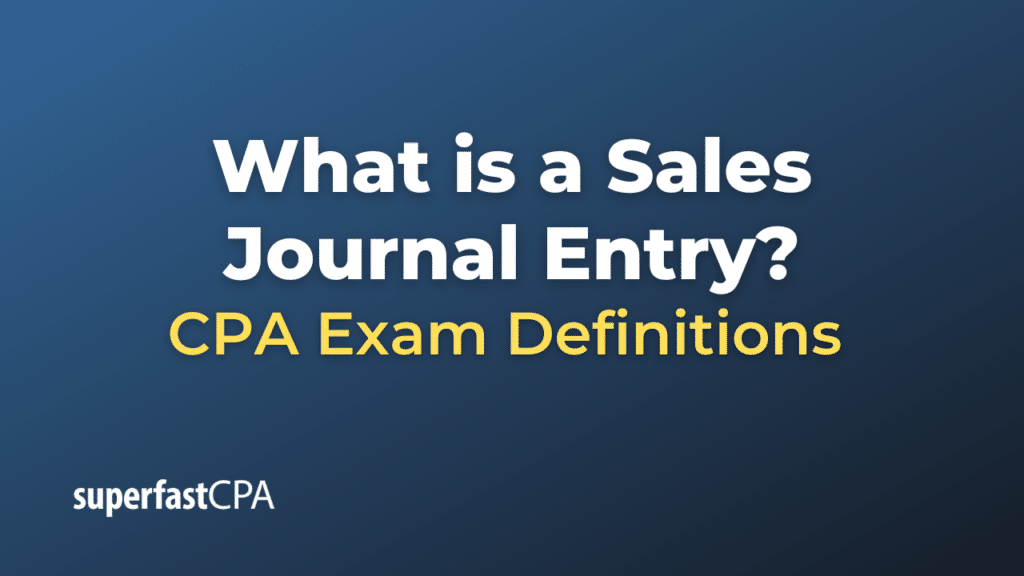Sales Journal Entry
A sales journal entry is the accounting entry made in the general ledger to record credit sales of goods or services. This entry transfers the amounts from the sales journal (where credit sales are chronologically listed) to the relevant ledger accounts. By recording this, a company ensures that its financial statements accurately reflect its financial position and operations.
Here’s how a typical sales journal entry might be structured:
- Debit (Dr) Accounts Receivable: Represents the amount that customers owe the company for the goods or services they purchased on credit.
- Credit (Cr) Sales Revenue: Indicates the revenue earned from the sale of goods or services.
If the sale involves sales tax or value-added tax (VAT), the journal entry will have additional components:
- Debit (Dr) Accounts Receivable: For the total amount, including sales tax.
- Credit (Cr) Sales Revenue: For the sale price excluding tax.
- Credit (Cr) Sales Tax Payable or VAT Payable: For the amount of sales tax collected from the customer.
Example of a Sales Journal Entry
On September 15, 2023, “Readers’ Haven” sold 100 copies of a newly released novel to “Local Libraries Inc.” on credit. Each book was priced at $15. To encourage a bulk purchase, “Readers’ Haven” provided a 10% trade discount. Additionally, there’s an 8% sales tax on the transaction.
Later, on September 20, “Local Libraries Inc.” returned 10 copies due to some misprints and “Readers’ Haven” accepted the return.
1. Sale on September 15:
Total without discount: 100 books × $15 = $1,500
Trade discount: 10% of $1,500 = $150
Net amount after discount: $1,500 – $150 = $1,350
Sales tax: 8% of $1,350 = $108
Total amount billed to “Local Libraries Inc.”: $1,350 + $108 = $1,458
Journal Entry on September 15:
Accounts Receivable (Dr) $1,458
Sales Revenue (Cr) $1,350
Sales Tax Payable (Cr) $1082. Return on September 20:
Value of returned books: 10 books × = 0 (This will not include the discount since the discount was on the total sales)
Sales tax on returned books: 8% of $150 = $12
Total amount to be adjusted: $150 + $12 = $162
Journal Entry on September 20:
Sales Returns and Allowances (Dr) $150 Sales Tax Payable (Dr) $12 Accounts Receivable (Cr) $162
In this scenario:
- The first entry captures the sale of books, adjusts for the discount, and includes the sales tax.
- The second entry acknowledges the returned books due to misprints and corrects the respective amounts from the accounts impacted by the initial sale.













